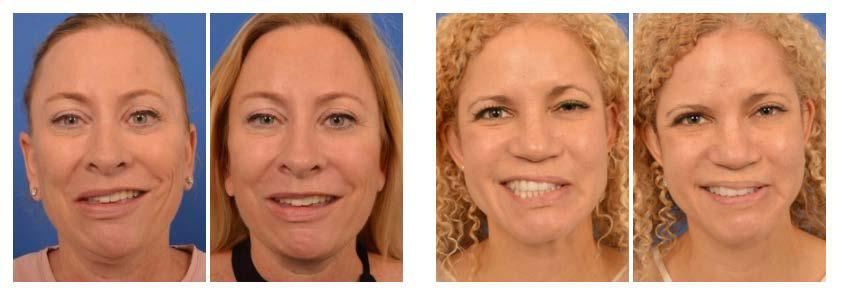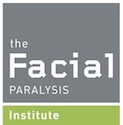Bell’s palsy strikes without warning, leaving one side of your face drooping or completely paralyzed. While most people recover naturally within a few months, some face persistent symptoms that dramatically affect their daily lives. When standard treatments don’t work, surgery offers hope for restoring facial function and confidence.
Key Takeaways
- Surgery is considered when symptoms persist beyond 12 months or complications develop
- Multiple surgical options exist, from nerve decompression to complete facial reanimation
- Early intervention typically produces better outcomes than delayed treatment
- Dr. Azizzadeh specializes in complex facial paralysis surgical procedures
- Recovery requires patience and commitment to rehabilitation programs
When Bell’s Palsy Requires Surgical Intervention
Bell’s palsy affects roughly 40,000 Americans each year. The condition causes sudden weakness or complete paralysis of facial muscles on one side, typically due to inflammation of the seventh cranial nerve.
About 80% of patients recover completely within six months. However, 15-20% develop long-term complications that can include:
- Persistent facial weakness or paralysis
- Synkinesis (unwanted muscle movements)
- Facial contractures and tightness
- Difficulty with eating, speaking, or expressing emotions
The diagnosis and management of bell’s palsy becomes complex when symptoms don’t resolve naturally. After 12 months without significant improvement, or when severe complications emerge, surgical options become viable alternatives to restore function and quality of life.
Surgical Options Available
1. Nerve Decompression Surgery
Facial nerve decompression surgery works by relieving pressure on the compressed facial nerve. This procedure offers the best results when performed within the first few months after Bell’s palsy onset, before permanent nerve damage occurs.
During the procedure, surgeons make a small incision and carefully remove tissue or bone compressing the nerve. Success rates reach 80-90% when timing is optimal.
2. Facial Reanimation Procedures
Facial reanimation surgery addresses cases where the facial nerve is severely damaged or completely non-functional. These complex procedures restore movement through several approaches:
- Nerve grafts: Healthy nerves from other body areas replace damaged sections
- Muscle transfers: Functioning muscles are moved to restore facial movement
- Cross-facial nerve grafts: Connect healthy facial nerves to paralyzed muscles
https://facialparalysisinstitute.com/blog/facial-reanimation-surgery-cost-breakdown
3. Selective Neurectomy
This precise procedure targets synkinesis, where facial muscles move involuntarily when attempting to use other muscles. Surgeons cut specific nerve branches to eliminate unwanted contractions while preserving desired movement patterns.
The technique requires exceptional skill and detailed understanding of facial nerve anatomy, making surgeon selection crucial for optimal outcomes.

Determining Surgical Candidacy
Not everyone with persistent Bell’s palsy qualifies for surgery. Comprehensive evaluation includes multiple assessments:
Diagnostic Tests:
- Electromyography to measure nerve and muscle function
- Imaging studies to rule out underlying conditions
- Functional assessment of facial movement deficits
Timing Considerations:
- Recent onset cases (6-12 months) may benefit from decompression
- Complete nerve damage requires reconstruction procedures
- Age, health status, and realistic expectations influence planning
Dr. Azizzadeh emphasizes individualized treatment approaches, recognizing that patient priorities vary. Some focus on smile restoration, others prioritize eye closure or speech improvement. Understanding these goals guides surgical decision-making and technique selection.
Recovery and Expected Outcomes
Recovery timelines vary significantly based on the specific procedure performed. Simple decompression surgery typically involves shorter healing periods, while complex reanimation procedures may require months or years for complete recovery.
Recovery Phases Include:
- Initial healing (2-4 weeks): Focus on wound care and swelling management
- Nerve regeneration (3-12 months): Gradual return of muscle function
- Rehabilitation (ongoing): Physical therapy and facial exercises optimize results
https://facialparalysisinstitute.com/blog/longterm-facial-paralysis
Physical therapy plays a vital role throughout recovery. Patients learn to use newly reinnervated muscles effectively through facial exercises, massage techniques, and biofeedback training. Success rates for reanimation procedures reach 70-85% when performed by experienced surgeons.

Special Patient Populations
Children and Adolescents
Children with facial paralysis require specialized approaches due to their developing nervous systems. Pediatric cases often involve congenital conditions rather than typical Bell’s palsy, necessitating different surgical strategies and timing considerations.
Elderly Patients
Age alone doesn’t disqualify patients from surgical treatment. However, older adults may face challenges related to slower healing and medical comorbidities. Careful patient selection and modified techniques account for individual health status while maintaining safety.
Complex Cases
Patients with bilateral facial paralysis present unique challenges requiring staged surgical approaches. These cases often benefit from asymmetric procedures designed to achieve functional improvement while maintaining facial balance.
Comprehensive Treatment Approach
Modern bell’s palsy treatment options extend beyond surgery alone. The most successful outcomes result from coordinated care involving multiple specialists:
- Facial plastic surgeons for primary procedures
- Neurologists for ongoing nerve function assessment
- Physical therapists for rehabilitation programs
- Psychologists to address emotional impacts
Nonsurgical treatments like botulinum toxin injections often complement surgical procedures by fine-tuning muscle balance and reducing unwanted contractions. These adjunctive therapies continue long after surgical healing, helping maintain optimal facial function.
Making an Informed Decision

Choosing surgery for Bell’s palsy requires careful consideration of risks, benefits, and alternatives. The best candidates are motivated individuals with realistic expectations who understand that recovery is a gradual process.
Key factors to consider include:
- Severity of functional impairment
- Impact on quality of life and self-confidence
- Willingness to commit to rehabilitation programs
- Understanding of realistic outcome expectations
Expert consultation helps navigate these complex decisions. Professional evaluation provides assessment of individual cases, explanation of available options, and guidance based on current evidence and clinical experience.
Second opinions prove valuable, particularly for complex cases where multiple treatment options exist. Different surgeons may offer varying perspectives on timing, technique, or expected outcomes, helping patients make fully informed decisions.
Looking Forward
Surgery for Bell’s palsy continues evolving as new techniques emerge and understanding of facial nerve function improves. While not every patient requires surgical intervention, those who do can achieve meaningful improvements in function, appearance, and quality of life through carefully planned and expertly executed procedures.
The key lies in finding experienced specialists who understand both the technical aspects of facial paralysis surgery and the profound personal impact these conditions have on patients’ lives.
Request your consultation with Dr. Azizzadeh today
Call us at (310) 657-2203 to schedule an appointment.
Schedule a Consultation




